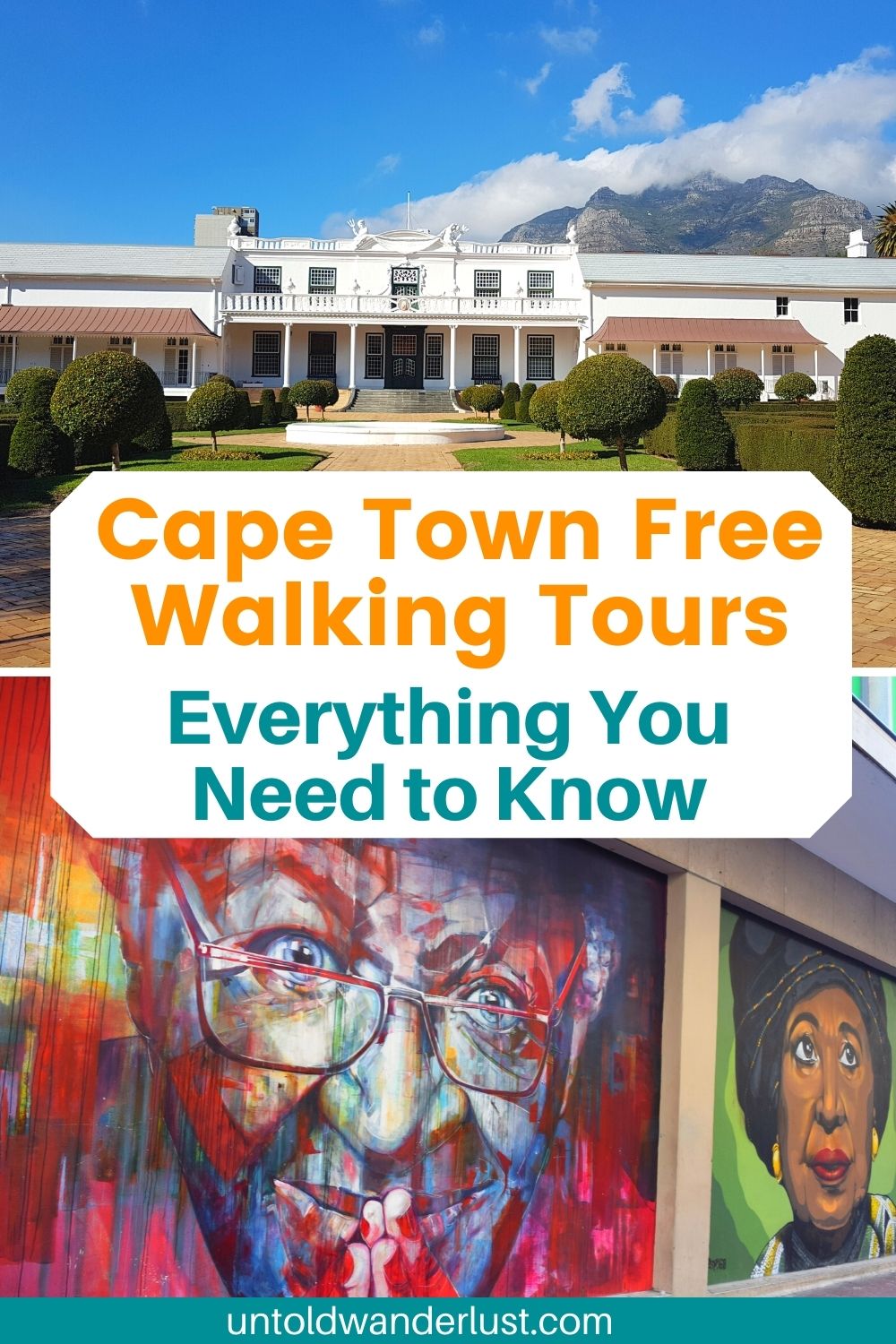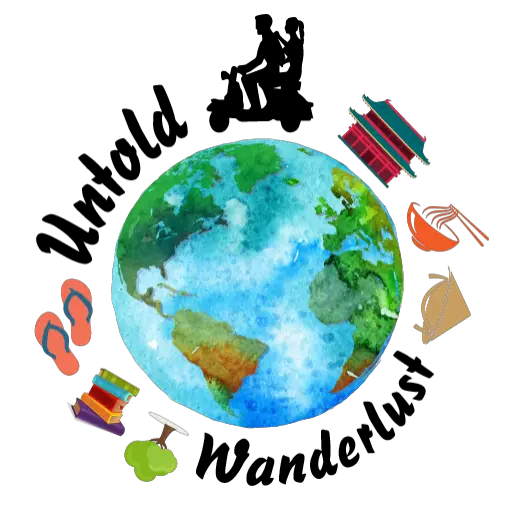Cape Town free walking tours are a fantastic way to get your bearings, see Cape Town, and delve into the country’s deep history. Here is everything you need to know about the free walking tours on offer.
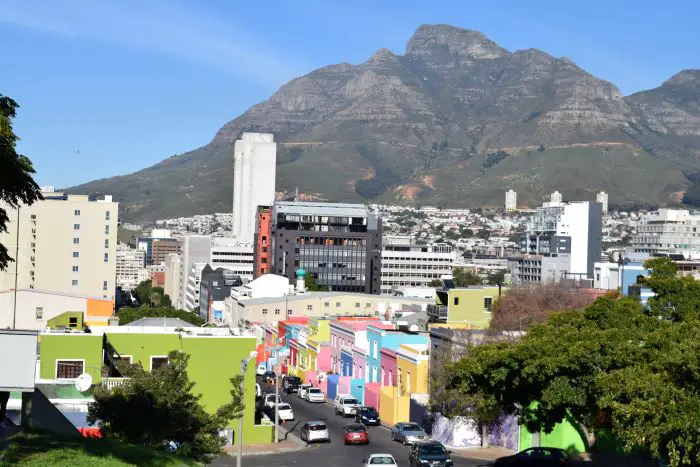
Disclosure: Untold Wanderlust contains affiliate links. If you click on these links and make a purchase, we will earn a small commission at no extra cost to you. You can find our full disclosure policy and privacy policy here.
The 3 different types of Cape Town free walking tours
There are 3 walking tours to choose from; historical, apartheid (racial segregation), and Bo-Kaap (the colourful Muslim neighbourhood). Each tour is 90 minutes and explores different areas within the city centre. All 3 tours depart from the same location at Motherland Coffee at Mandela Rhodes Place, Wale St & Georges Mall, Cape Town City Centre. Tours depart twice a day at either 11 am, 2 pm, or 4 pm. Below we will share with you the highlights of each tour.
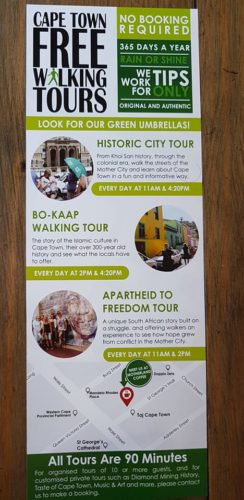
Free historical walking tour
We decided that the historical tour would be the perfect introduction to the city. Our guide, Ken, was articulate, funny and informative. His love of the city was visible in his detailed explanation and description of Cape Town.
The first stop on the historical tour was Green Market Square. Here we learned about its history and why it’s called Green Market. We also visited an infamous tree stump, which we think is best left explained by your guide. Ken then chronicled the arrival of colonists and the changing landscape of the city throughout the years of European occupation. Lastly, we took a stroll through Company’s Garden to admire the flora and fauna. A walk through a beautiful park is pleasant enough, but Ken’s insight into how old some trees were and where they were imported from, made the stroll so much more interesting. It was by far our favourite part of the tour. The curiously cute little critters at our feet made it more fun too.
This tour departs every day, rain or shine at 11 am and 4:20 pm.
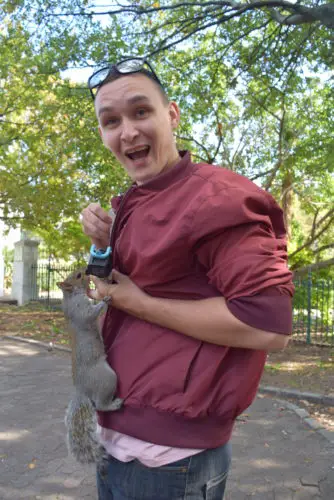
Free Bo-Kaap walking tour
Our thirst for information was not yet fully quenched, so that same day, in the afternoon we went on a second walking tour. The Bo-Kaap is a colourful Muslim neighbourhood situated uphill, with spectacular views of the mountains surrounding Cape Town. Its name comes from the Afrikaans word ‘bo’, meaning ‘up’…Up Cape!
First, we were given an introduction to the slavery that tragically occurred in Cape Town from the year 1658, until 1806. Most of these enslaved people came from eastern parts of the world like Indonesia, India, and Sri Lanka. We learned about how the locals in the Bo-Kaap are fighting against gentrification, due to the fact their neighbourhood sits in one of the most desired locations in all of Cape Town. We also found out that the country’s national dish (bobotie) has deep roots within the Bo-Kaap. Want to know the reason why the locals decided to paint their houses in different colours? We suggest you go on this walking tour!
This tour departs from the Motherland Cafe at 2 pm and 4.20 pm daily.
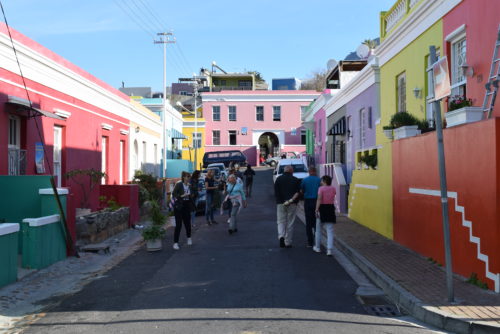
Free apartheid walking tour
The next day at 11 am, we embarked on another tour of the city. By this point, we were familiar faces among the staff and they knew us by name. Last but not least, we embarked on the apartheid tour. Apartheid is the local tongue for ‘separation’. Apartheid started in 1948. It was a tool used by the white minority to gain political, economic, and social system control of South Africa. They created a hierarchy among the different races of people to create a division in the communities.
During apartheid, social classes were classified based on a variety of factors; the dimension of your jaw, the width of your shoulders, and of course, the colour of your skin. One interesting classification was “honorary whites”, by which rich individuals (often businessmen) of any race were given the rights equivalent to that of a white person, to conduct their overseas business efficiently. Another way in which a person was determined as either “white” or “coloured” was the pencil test. This interesting method of classification will be demonstrated on your walking tour, should you decide to take it.
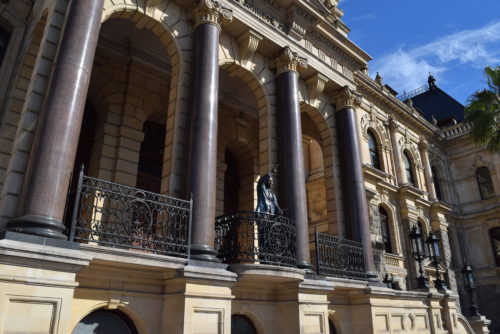
We learned about many protests that occurred in South Africa during the time of Apartheid; “purple rain” being the most interesting and memorable. We also learned about the laws during the time of apartheid. Passbooks (Dompas) were used to subjugate non-white South Africans. Mixed-race relationships were punishable by up to 6 months in jail. Being the child of parents from different races was seen as being “born a crime”, up until 1995. Our guide Jervais was a great storyteller. He told stories with such enthusiasm and left us going home with plenty of movie recommendations relating to the content of the tour.
This tour departs at 11 am and 2 pm daily.
Monetary tips for the tour
Each of the tours relies solely on tips. The guides don’t receive a salary for their time and effort. Each person is different, so whatever you decide to donate, make it a generous amount by your standard. The Cape Town free walking tours were started as the cost of other tours was expensive. However, the guides wanted to give visitors the chance to learn about Cape Town and its history without forcing people to break the bank.
Looking for more cool things to do in Cape Town, don’t miss a trip to Table Mountain!
Where to stay in Cape Town
91 Loop Boutique Hostel: Cape Town has tons of hotels and hostels for everyone’s needs, but 91 Loop has to be the best! They offer all types of rooms; dorms, male dorms, female dorms, and private rooms. The hostel even offers pod-style dorms that make for the perfect mix between a social environment and a private space. The hostel also boasts a bar with a games area downstairs too, meaning you never need to leave the hostel if you don’t want to.
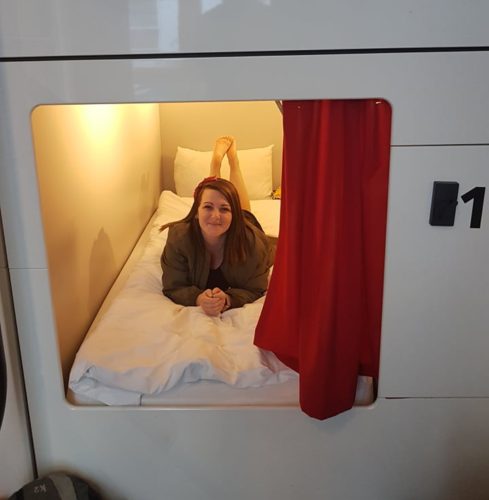
All in all, we learnt a lot throughout the 3 tours within two days. 90% of the information we have written in this post has been from memory, which goes to show how incredibly informative information is jam-packed into each of these tours. Walking tours are such a great method of connecting with a country. You leave gaining a huge insight into its past. We regret not taking the opportunity to do walking tours in other places we have visited, such as Budapest or Prague. Who knows what we would have learnt?
Essential resources for travelling in South Africa
Travel Insurance – No matter where you’re travelling to, it’s a good idea to make sure you’re covered for any accidents or losses. We spent days and weeks searching for insurance, but most insurers would not allow us to take out a policy as we were already abroad. Our personal choice is Safteywing. You can opt for automatic monthly payments, just like a subscription. More importantly, it is available in 180 countries and can be purchased whilst already travelling. There is no cap on the duration of travel.
Visa – Before you travel to any country, make sure to check if you need a visa. iVisa is a fantastic website that is super easy and quick to use. Just type in where you are from. and where you are going. to check if you need a visa. If you do, you can quickly make an application online.
Accommodation – Booking.com is our go-to when looking to pre-book accommodation online. Booking.com tend to almost always have the best rates and a FREE cancellation policy for most properties.
Tours & Activities – If you want to book tours and activities online, make sure to check out Get Your Guide. Get Your Guide takes the stress out of booking activities abroad. You will also find a range of benefits, such as skip-the-line passes, lunch included in your tours, and so much more.
Travel tips ebook -Before you head off on your adventure, make sure to download our free ebook. It has a whopping 109 budget travel tips to help you make your hard-earned cash go further. Click here to download your FREE ebook.
Like this post? Pin it
